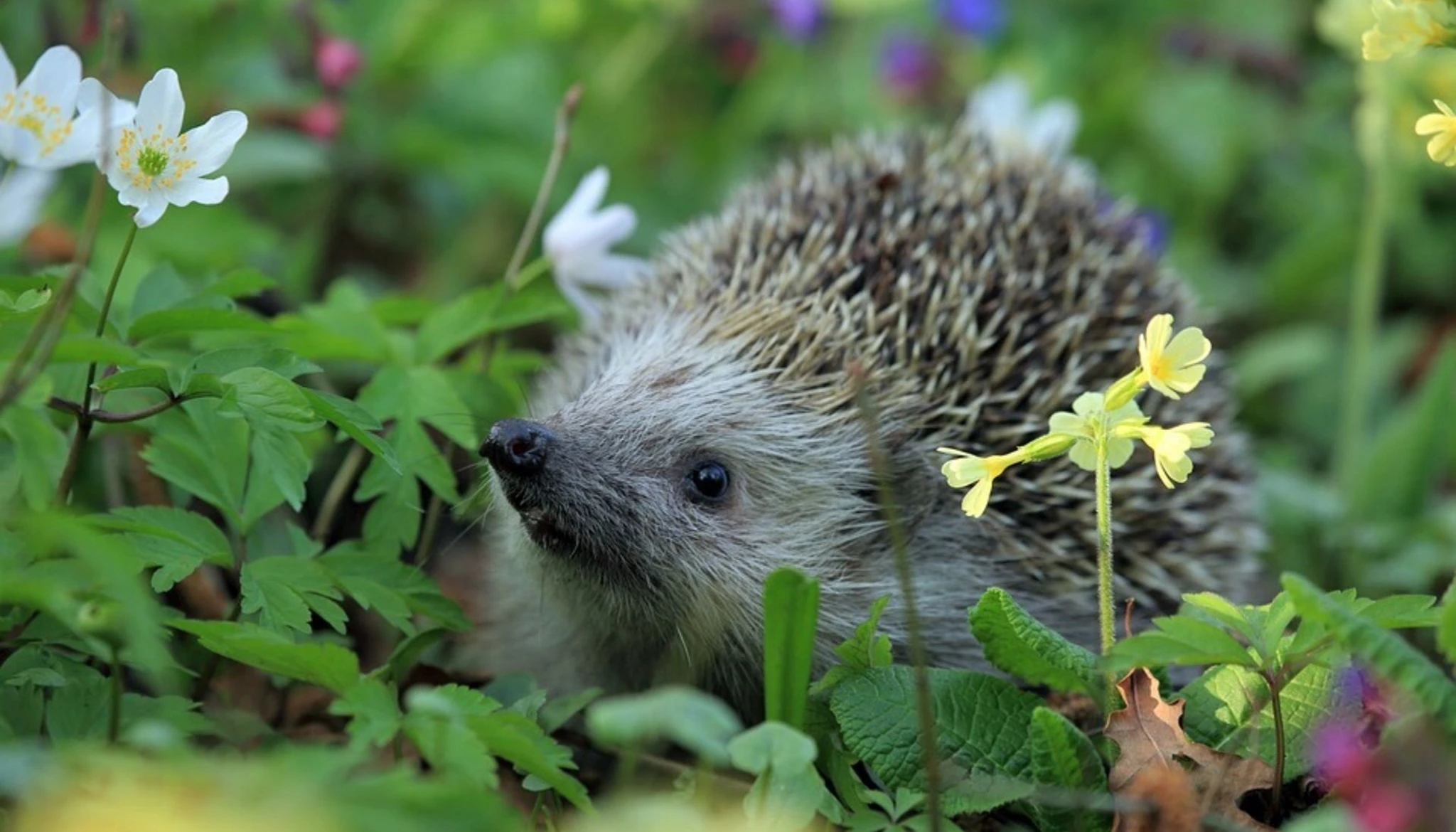Wildlife blog: A guide to hedgehogs

In support of this year’s Hedgehog Awareness Week (3rd to 9th May 2020) we are sharing our guide to hedgehogs which is packed with facts about ways you can help protect our local population.
Where do hedgehogs live?
Hedgehogs are found throughout Milton Keynes and the UK, in a variety of habitats such as woodland, gardens, farmland and grassland. As their name suggests, they love hedges as they provide shelter. At home you may find hedgehogs living in your garden hedge or hiding in long grass. Hedgehogs might be nesting and having their young in your garden in the next few months, so please take extra care if you are tidying up.
What do they eat?
Hedgehogs’ favourite foods are beetles, slugs, earthworms and caterpillars.
What can I feed them?
We are approaching breeding season so the hedgehogs will benefit from having a bit of extra food. You can feed them with meat based, wet dog food and cat food. If you have cats in your garden, you may need to use your imagination to exclude them from your hedgehog supper! Try placing the food in a bowl and boxing it with house bricks or heavy stones just large enough to allow a hog to squeeze in but too small for a cat. You could also provide a shallow dish of water. Milk is NOT suitable for hedgehogs as they are allergic to milk.
When will I see them?
Hedgehogs are nocturnal mammals, coming out at night to feed. They are active between March and October each year, hibernating during the chilly winter months. Warmer winter weather can wake hedgehogs up out of hibernation, so be sure to give them some food if you catch them out and about over winter.
Why do hedgehogs need our help?
Since 2002, as much as 30 per cent of the UK hedgehog population has been lost. Changes to farmland has reduced their habitats and left them without much to eat. Hedgehogs have had to move into the cities and towns, making urban gardens and parks their new homes.
What is the population of hedgehogs like in Milton Keynes?
The parks in Milton Keynes appear to support a good population of hedgehogs, but The Parks Trust is working to improve the habitat for hogs in the wider landscape. Campbell Park has a strong population of hedgehogs, along with Great Linford Manor Park. The Trust works with local schools and community groups to carry out hedgehog surveys to help understand where hedgehogs are doing well so that numbers can be protected.
How can I survey hedgehogs?
You can survey for hedgehogs in your garden by using a footprint tunnel, these are relatively easy and cheap to make. Find out how to make yours in this guide from the Suffolk Wildlife Trust.
How can I make my garden hedgehog friendly?
- Create hedgehog highways
Cutting a 13cm x 13cm hole in your fence or digging a channel underneath will allow hedgehogs to move between gardens. - Avoid the use of pesticides
Slug pellets and pesticides are toxic for Hedgehogs. Hedgehogs provide their own form of pest control by eating lots of unwanted insects, so encourage them into your garden instead. - Make water safe
Hedgehogs can swim well but struggle to get out of steep-sided ponds, so provide a ramp or create shallow areas for them to climb out. - Provide nesting sites
Keep your garden a bit scruffy around the edges to allow for hedgehogs to nest and hibernate in piles of leaves, logs and long grass. - Help the hogs stay safe
Check for hedgehogs before lighting bonfires or cutting long grass. Keep garden netting and household rubbish above ground level to prevent the hogs getting trapped.
We hope you found this guide useful, let us know how you’re protecting the local population on social media by tagging us @theparkstrust.


